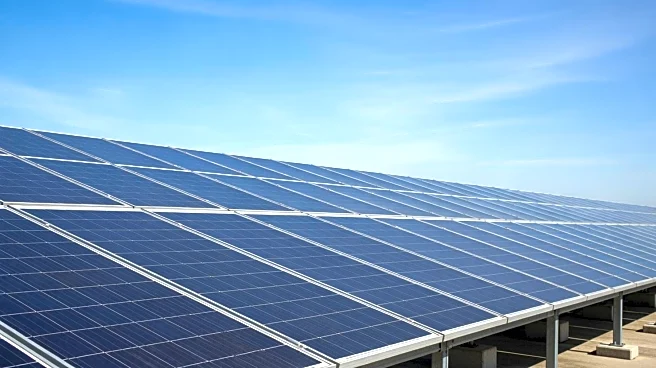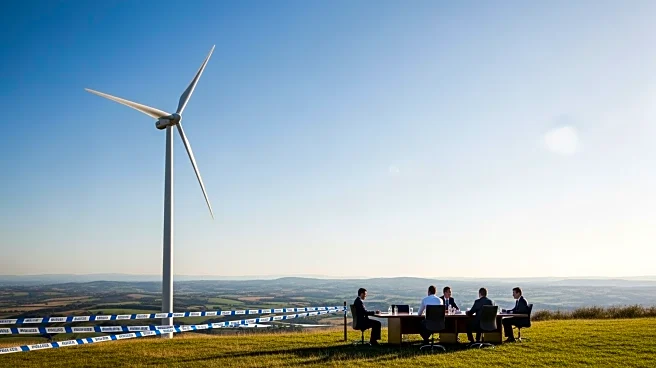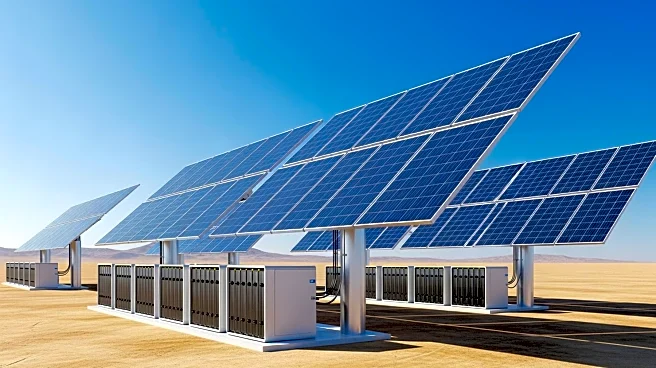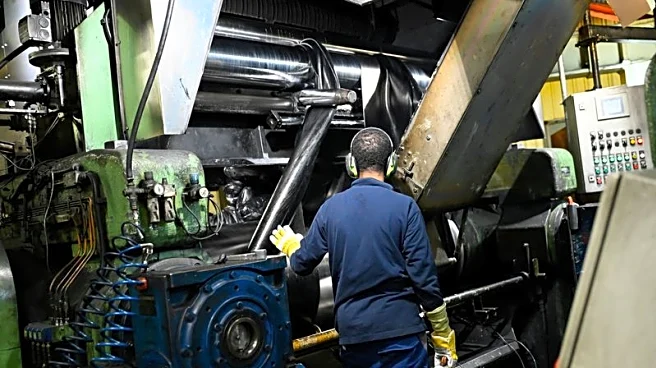What's Happening?
Fraport has inaugurated a new photovoltaic installation along Frankfurt Airport’s Runway 18 West, marking a significant step towards achieving its net zero emissions target by 2045. The installation, described
as a 'solar fence,' spans 2,800 meters and consists of 37,000 vertically aligned solar panels. This setup is capable of generating up to 17.4 million kWh of electricity annually. The energy produced will be used to power terminal air conditioning systems and support the airport's growing fleet of electric vehicles. This development is part of Fraport's broader sustainability initiatives aimed at reducing carbon emissions and enhancing energy efficiency at one of Europe's busiest airports.
Why It's Important?
The introduction of this solar installation is a critical component of Fraport's strategy to reduce its carbon footprint and transition towards sustainable energy sources. By generating renewable energy on-site, Frankfurt Airport can significantly cut down on its reliance on fossil fuels, thereby reducing greenhouse gas emissions. This move not only supports global efforts to combat climate change but also sets a precedent for other airports worldwide to follow suit. The initiative is likely to enhance Fraport's reputation as a leader in sustainable airport operations, potentially influencing policy and investment decisions in the aviation industry. Additionally, the project supports the broader economic and environmental goals of the European Union, which is pushing for increased adoption of renewable energy across various sectors.
What's Next?
As Fraport continues to implement its sustainability agenda, further developments in renewable energy infrastructure at Frankfurt Airport can be anticipated. The success of the solar fence project may lead to additional investments in similar technologies, both at Frankfurt and other airports managed by Fraport. Stakeholders, including government bodies and environmental organizations, are likely to monitor the project's impact on emissions and operational efficiency closely. The initiative may also prompt discussions on regulatory incentives for airports to adopt green technologies, potentially influencing future aviation policies at the national and EU levels.












